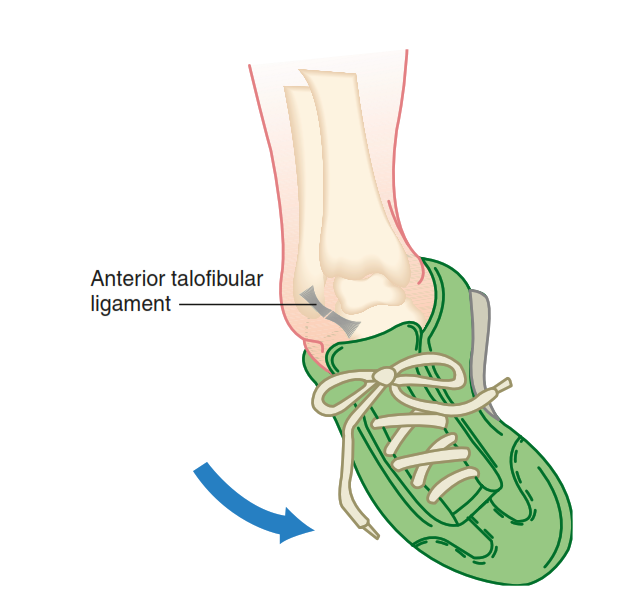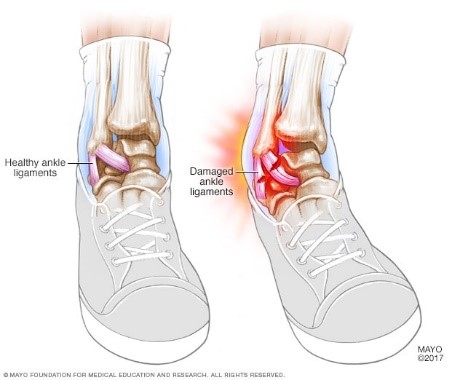
Sprains or ankle sprains are an event that is often encountered, both due to everyday events and sports injuries. The incidence of this sprain can reach 2-7 events per 1000 people and has a high recurrence rate due to frequent ankle instability. This incidence rate may be higher than the actual incidence, because many sufferers do not seek medical help when experiencing sprains. Most sprains do not occur in athletes or sports injuries, but are the result of everyday occurrences. Most ankle sprains occur on the outside of the ankle, while the rest occur on the inside. Ligaments in the ankle function to maintain joint stability and prevent excessive movement. If the ligament is pulled, more than normal movement, there will be a tear in the ligament.
Sprains are often caused by sports activities that involve running, turning and jumping, such as basketball, football, volleyball. In fact, even in professional athletes, this sprain is the most common injury.
Because of the high probability of recurrent sprains, the risk of chronic ankle instability is high, which is characterized by mechanical instability that will interfere with daily activities. This chronic risk can occur after sprains, repeated events involving the same structure, or due to other mechanisms. The risk factors that cause it to occur are laxity (flexibility) in the ligaments, the use of inappropriate footwear, the surface of the sports field that is not good, sports activities such as tackles in football or basketball, or other sports.


Sprains are characterized by a history of falls where the ankle bends, and the patient is unable to bear weight or continue activities. Sometimes there is a "pop" sound when falling, followed by acute pain and swelling around the ankle. On examination, bruises, ankle deformity can be found. A careful examination must be carried out by a doctor to find out the location of the injury, and the level of pain during activity. X-ray examination is needed to evaluate the bones and the possibility of displacement of the joints. Another useful examination is MRI, in which the severity of the ligament injury can be well evaluated.
In conditions of injury, the initial treatment is DO RICE, NO HARM. Rest-Ice-Compression-Elevation is carried out, which is in the form of resting the ankle and reducing walking activities or loading the ankle, compressing ice 4 times a day for 10-15 minutes within 48-72 hours after the injury, splinting and elevating the leg higher than the heart to prevent swelling. And NO HARM in the form of: Heat-Alcohol-Running-Massage, namely don't compress with warm or hot water, drink alcohol, stop running activities, walk and support your weight for up to 72 hours, and don't massage the injured area. The use of a cast is useful if it is done 2-3 weeks after the trauma, allowing the patient to return to the workplace immediately. The use of a cast for 6 weeks followed by a program of physiotherapy for 1 month has a high success rate in treating ankle injuries without the need for surgery.
In cases of mild ankle injuries, you can also add the use of a brace during the recovery period. In severe cases, where the entire ligament is torn, treatment can be in the form of using a cast, and surgery can even be performed to repair ligament injuries, especially for athletes who must immediately return to training.
Chronic ankle injuries due to acute events that are not treated, over time will cause normal movement disorders and calcification occurs around the joints. In chronic conditions, rehabilitation and reduced activity can be carried out. The main goals of rehabilitation are muscle strength and good joint coordination.
As a prevention of sprains, don't forget to always warm up before exercising, be careful when walking or running on an uneven surface, use ankle protectors if you have a history of sprains, use shoes that are the right size and condition, don't wear shoes too often. -high heels, do muscle strengthening and flexibility and balance exercises. If a sprain occurs, seek immediate medical attention to prevent further joint damage.
Article written by dr. Steesy Benedicta, M.Ked.Klin, Sp.OT (Orthopedic and Traumatology Specialist at EMC Pulomas Hospital).
